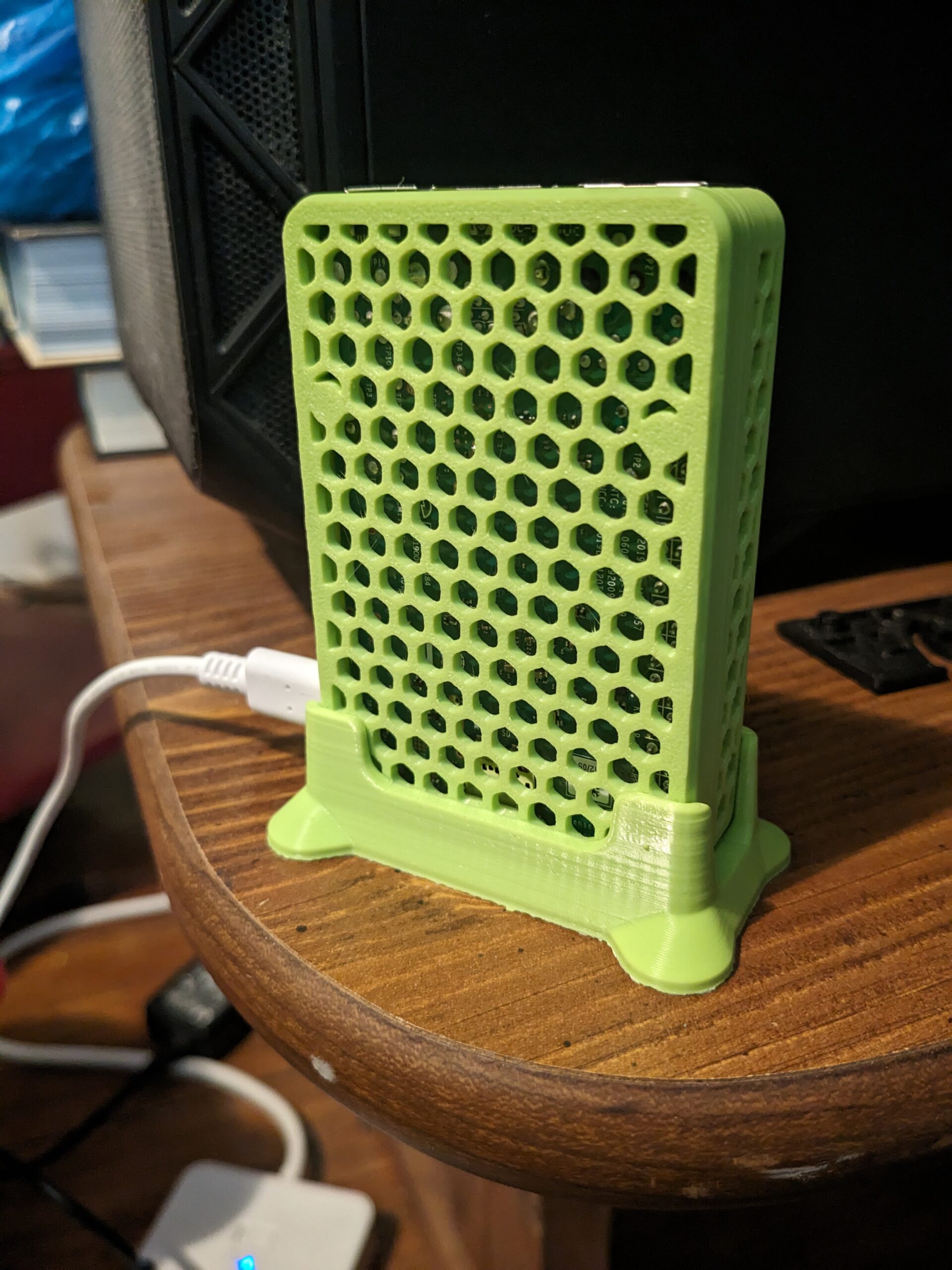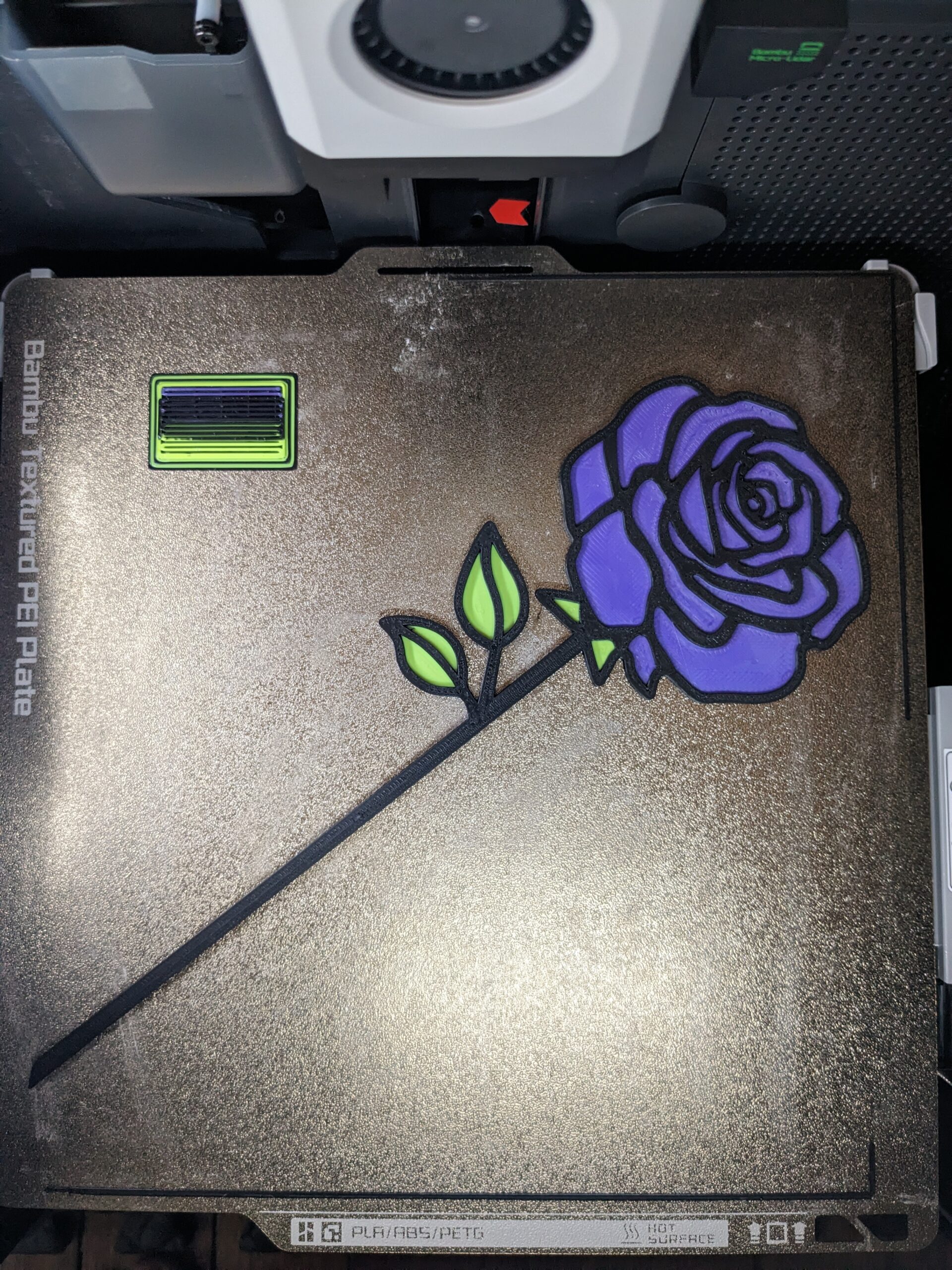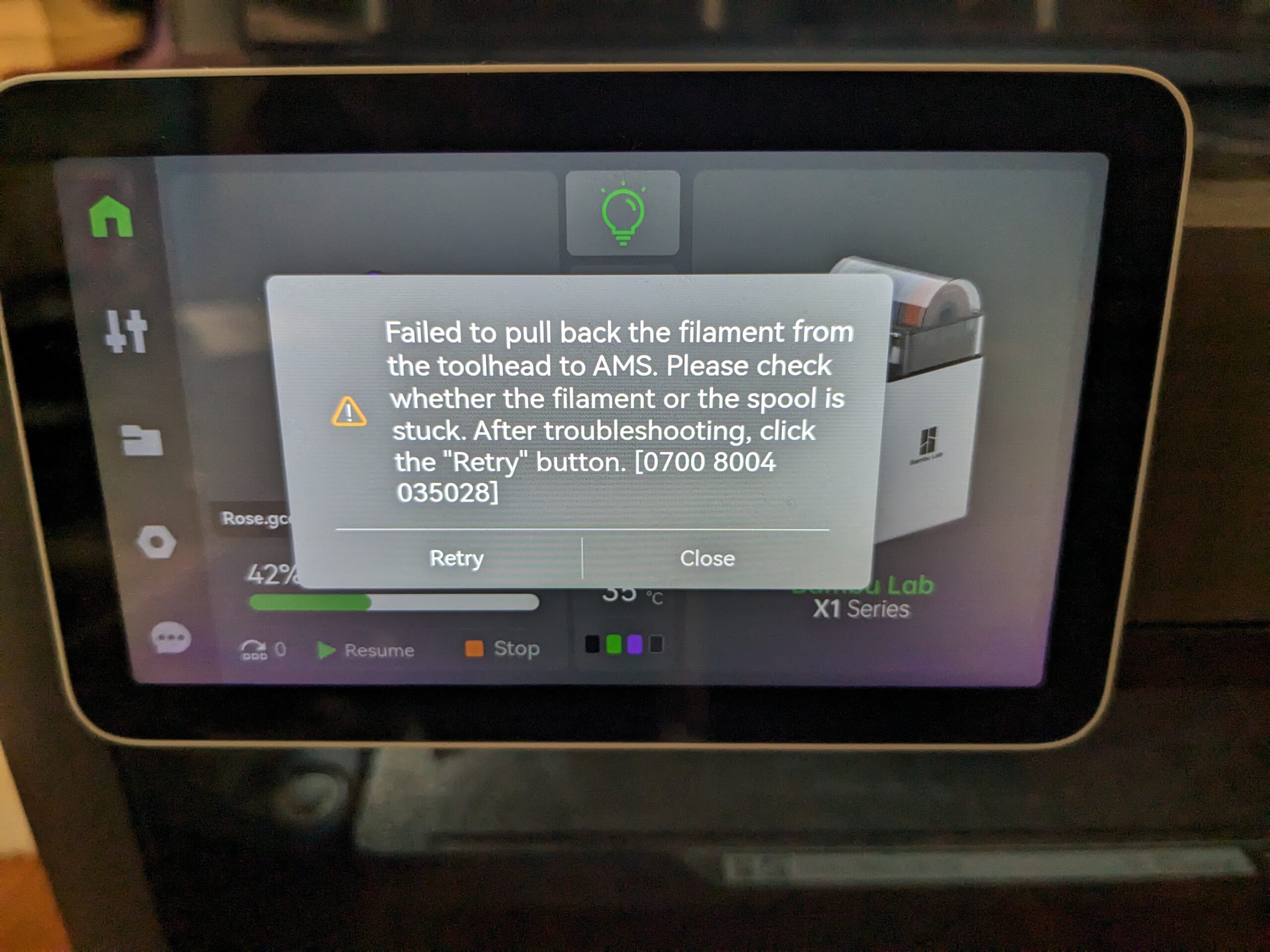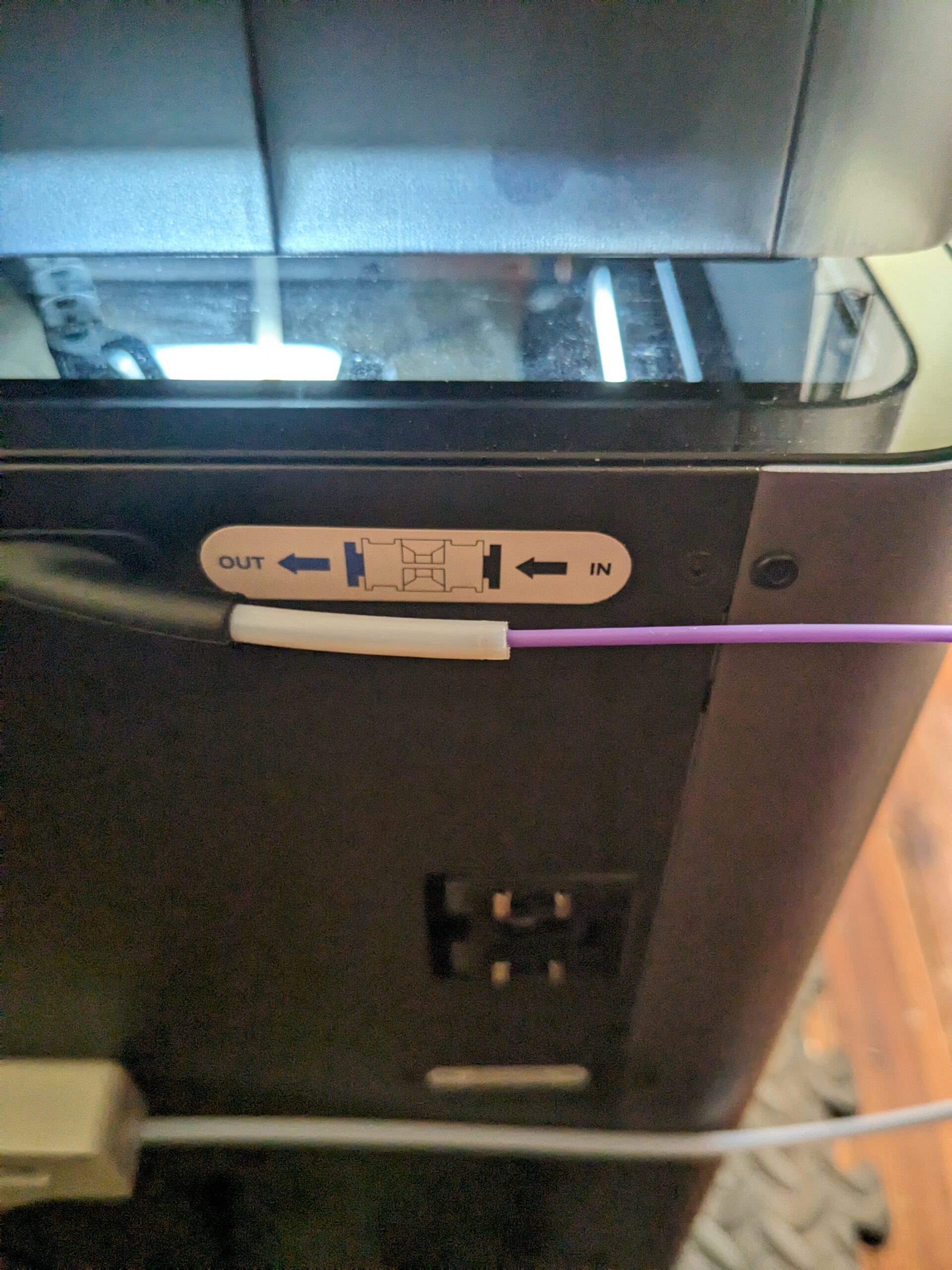The Bambu Lab X1E is the latest release in Bambu’s X1 line. Designed with professional settings and engineering applications in mind, the X1E expands the options for affordable, enterprise printers. New features like a network kill switch should also appeal to more privacy-minded businesses. This printer was provided for review by Dynamism, a U.S. reseller for the X1E and other 3D printers. While Dynamism’s support team was standing by, the setup and use of this printer was largely issue free.
Unboxing & Setup
My review unit arrived in an incredibly secure and easy-to-transport box. Note to manufacturers: little handholds on the side of your boxes go a long way for portability! The printer’s accessories—including the rear spool holder, AMS unit, filament swatches and extra nozzle—were secured within its chamber. The included instruction manual provided an ideal workflow for removing the accessories, unscrewing the bed and unlocking the toolhead. This was the most time-consuming portion of the setup, as installing the AMS and touchscreen went quickly. Within an hour, I was connecting the printer to my home network and getting ready for my first print.

I printed this Garbage Can to catch the filament scraps from the printer’s rear purge chute.
Rating:




The Printing Experience
Firing off prints on the X1E is a breeze. Bambu Studio has the cleanest, easiest-to-navigate user-interface of any slicer I’ve encountered. The critical settings to manage a print are simple to locate and a handy search bar allows you to quickly hone in on any less common settings. Bambu Studio boasts a host of quality-of-life features that put it leagues above other slicing programs. The filament painting option makes it easy to design custom multicolor prints.

The filament painting option is easy to use, but you’ve got to plan your mulitcolor prints carefully to avoid overly long print times.
Seam Painting helps you ensure surface quality and print strength by choosing where to place an object’s seam. And the slicer will do everything in its power to prevent you from slicing objects in a way that could cause toolhead collisions.

Using the seam painting feature in Bambu Studios, I was able to block the default seam and force it to another part of the model.
Bambu’s included default profiles and flow calibration allowed me to print with a host of PLA filaments that required individual temperature profiles when utilized on other machines. It was fantastic not to experience print failures because I’d accidentally used the wrong profile. The overall connectivity between the AMS and slicer was incredibly surprising. The ability to establish detailed profiles for non-Bambu filaments via the touchscreen is limited. It is easy to do within the slicer and the program keeps it mapped to your AMS.
The advertised bells and whistles on this printer—auto bed leveling, LIDAR and print quality detection—all work flawlessly. In my month using the system, only one failed print got beyond the first layer and the printer stopped it as soon as it detected a mess of spaghetti on the bed. Furthermore, the printer’s own self-diagnosis features are fairly capable, with QR code links to the Bambu wiki.

A Raspberry Pi 4 case & stand printed in Green Apple PLA.
Rating:




Life with the X1E
A remarkable detail about the X1E is how unobtrusive it is. Like all 3D printers, it makes a certain amount of noise, but the machine can easily run in an office or workspace environment without disrupting daily activity. I was able to conduct phone and video calls in my office while the printer was running. Most people I spoke with didn’t notice any additional noise from the system and those who did couldn’t really tell it apart from a TV or laptop faintly emanating noise in the background. The loudest the printer ever got was when utilizing its filament dryer setting, and this noise didn’t register to anyone I spoke with over the phone or my computer’s microphone.
The carbon filtration in the unit is mostly excellent. There are no real noticeable odors while printing traditional or wood-filled PLA. The negative smell associated with ABS, unfortunately, was still slightly noticeable while printing (and drying), but simply cracking the window in my office did away with the issue. The ventilation in any professional environment should be able to handle it even better.
Rating:




Pain Points
I experienced semi-regular WIFI connection issues between the unit I tested and my computer. These occurred most frequently when I powered off my computer after sending a print to the plate. These connection problems were always resolved by powering the unit off and turning it back on. Reseting the connection code via the touchscreen fixed the issue about 50% of the time. This might cause problems in some work spaces or print farm environments. A dedicated LAN connection is probably required to get flawless, uninterrupted connectivity to the printer.
My biggest overall obstacle with this printer was related to the AMS. Occasionally, there were issues retracting filament back into the AMS, leading to an error. This commonly occurred at the end of jobs, but was more common during multicolor prints.
It was generally a quick and trivial matter to physically pull out the filament and coupler and allow the material to retract back into the AMS, but doing it multiple times a day (or multiple times for a single print) definitely got a tad annoying.

A beautiful multicolor Rose print. I experienced three filament retraction issues during the 90 minute print.
Community-generated tweaks, like modified Y-splitters and guide tubes, can be printed to remediate the issue, but it’s disappointing that Bambu hasn’t simply resolved a design flaw that has persisted across its printer line. In a scenario with multiple units and AMS systems, I could see it getting very old very quickly.
Rating:



Final Thoughts
Using the X1E for the last month, I understand why so many of the conversations around Bambu Lab center around its disruption of the desktop 3D printing industry. From the machine’s design, to its touchscreen interface and slicer UI, you really start to wonder why other companies aren’t taking a page out of Bambu’s book.
The Bambu X1E would make a worthy addition to any office or work space that requires a fast, compact and reliable printer. This machine is quick to set up and Bambu’s dedicated slicer makes it a breeze for even a novice to slice and fire off prints. Dynamism’s support team was incredibly responsive in addressing any issues that arose and are sure to make fine partners to any professionals utilizing the X1E in their day-to-day operations.
Subscribe to Our Email Newsletter
Stay up-to-date on all the latest news from the 3D printing industry and receive information and offers from third party vendors.
You May Also Like
Further Understanding of 3D Printing Design at ADDITIV Design World
ADDITIV is back once again! This time, the virtual platform for additive manufacturing will be holding the first-ever edition of ADDITIV Design World on May 23rd from 9:00 AM –...
3D Printer Maker EVO-tech Reborn as NEVO3D — Once More With Feeling
EVO-tech was a 3D printing service and original equipment manufacturer established in 2013 and based in Schörfling am Attersee, Austria. The company produced high-quality material extrusion systems featuring linear bearings,...
3D Systems Brings 3D Printed PEEK Cranial Implant to the U.S. with FDA Clearance
For more than 10 years, 3D Systems (NYSE:DDD) has worked hand-in-hand with surgeons to plan over 150,000 patient-specific cases, and develop more than two million instruments and implants from its...
CDFAM Returns to Berlin for Second Annual Symposium
The second CDFAM Computational Design Symposium is scheduled for May 7-8, 2024, in Berlin, and will convene leading experts in computational design across all scales. Building upon the first event...



































